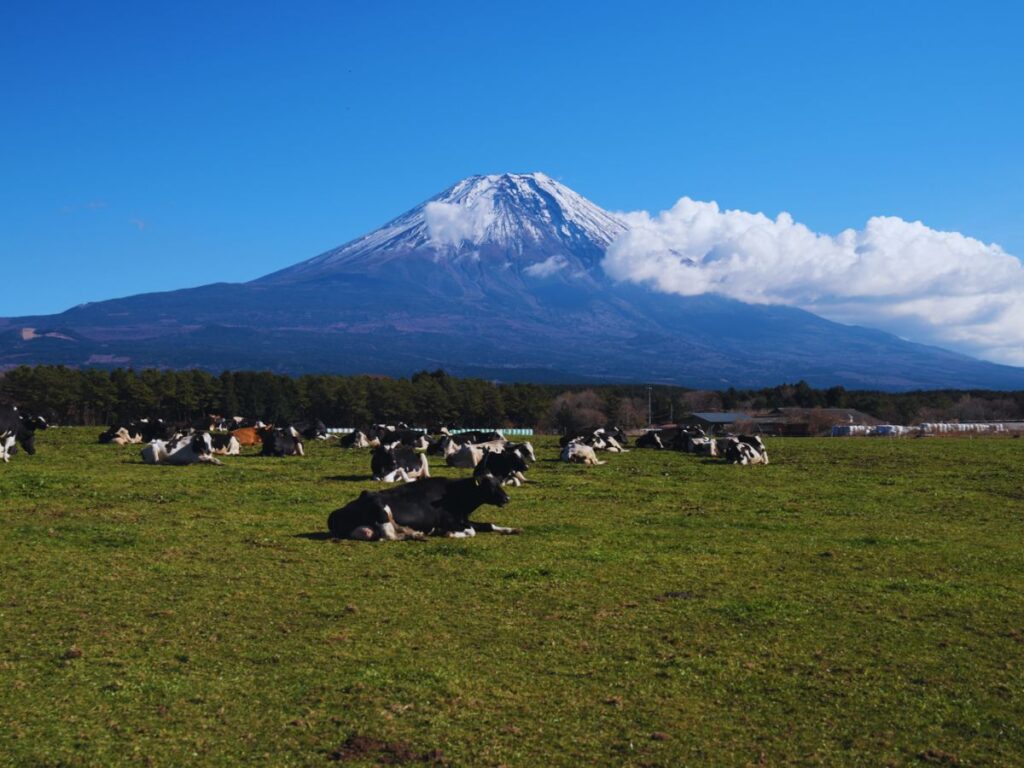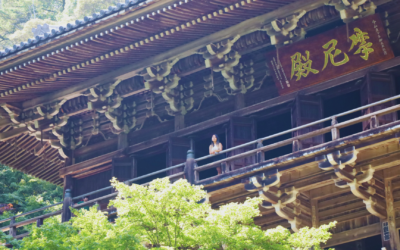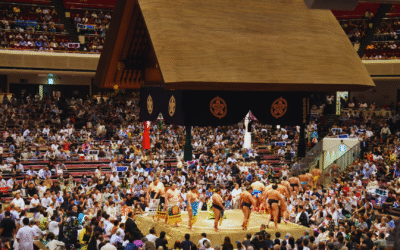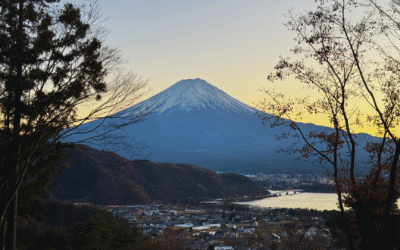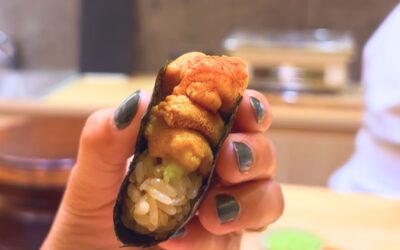Tokyo is a city that has a rhythm all its own—dynamic, dazzling, and packed with things to see and do. But what many travellers don’t realise is that just outside the city, there’s a completely different side of Japan waiting to be explored. Within a few hours from central Tokyo, you can find yourself surrounded by mountains, walking through centuries-old towns, standing at the foot of a giant Buddha, or breathing in the cool air of a riverside forest.
Today, we are introducing some of our favourite spots to visit on a day trip from Tokyo. These nearby destinations offer a refreshing change of pace from Tokyo’s high-energy streets. Some are under an hour away, others take a bit longer to reach, but all of them offer something Tokyo can’t: space to slow down, try something different, and see Japan from a new perspective.
Nikko
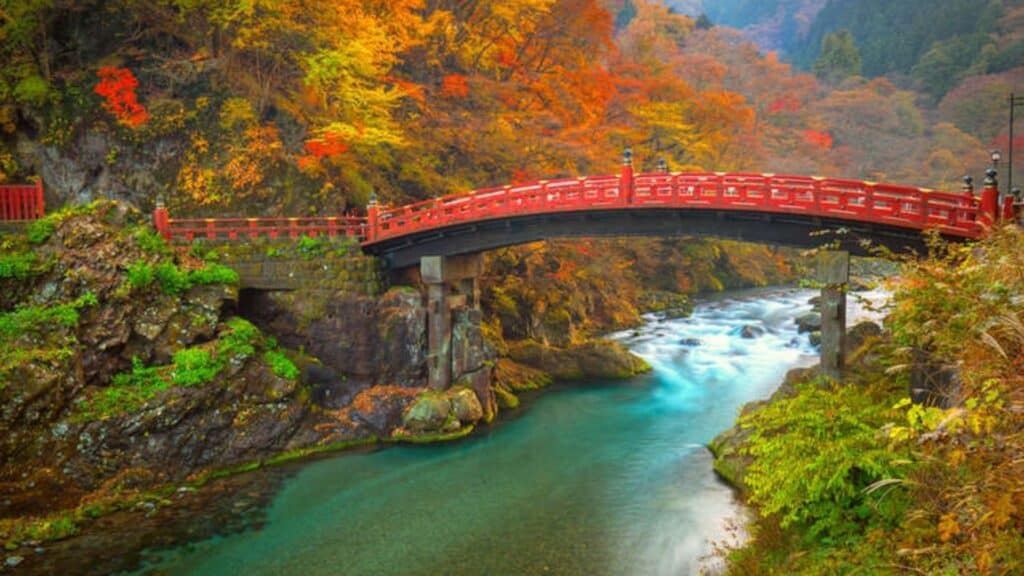
If you’re looking for a Tokyo day trip that blends jaw-dropping nature with serious cultural wow-factor, Nikko should be at the top of your list. It’s about two to two and a half hours from Tokyo, depending on which train you take. You can go via the JR line with a shinkansen to Utsunomiya and then transfer, or take the direct Tobu line from Asakusa, which is usually cheaper and more straightforward for travellers.
The main draw here is Toshogu Shrine, a UNESCO World Heritage Site and one of the most elaborately decorated shrines in Japan. This place is all gold, carvings, and detail—it’s a bit extra in the best way.
It was built in honour of Tokugawa Ieyasu, the first shogun of the Edo period, and it’s where he’s enshrined. Give yourself time to explore the whole complex, which includes pagodas, prayer halls, torii gates, and moss-covered stone paths winding through tall cedar trees. Entry to Toshogu costs around ¥1,300, and it’s worth every yen.
From there, it’s easy to spend the rest of your day exploring the surrounding nature. Take a bus or taxi up to Lake Chuzenji and Kegon Falls, both located in the Okunikko area. The ride itself is an adventure—up the twisty Irohazaka Winding Road, which is especially beautiful in autumn.

Kegon Falls is one of Japan’s most famous waterfalls, dropping nearly 100 metres, and you can view it from a free platform or take an elevator down to the base for a closer look. Lake Chuzenji is calm and scenic, perfect for a waterside stroll or a quick lunch at a lakeside cafe.
Other worthwhile stops in the area include Rinnoji Temple, Futarasan Shrine, and the lovely Shinkyo Bridge, which you’ll probably pass on your way in. If you’re visiting in cooler months, don’t skip a soak in an onsen (hot spring) in the Yumoto area—great for warming up after a day of walking.
Nikko makes a fantastic day trip, but there’s a lot to see, so it’s best to start early—aim to leave Tokyo around 7 or 8 AM to make the most of your time. If you’re joining our tour, we’ll help plan the route, recommend the best transport options, and make sure you’re not wasting time figuring things out on the spot. You’ll get a solid mix of nature, culture, and that peaceful mountain air Tokyo just can’t offer.
Kamakura & Enoshima

If you want a day trip that’s easy, scenic, and packed with variety, Kamakura and Enoshima are a winning combo. Located about an hour from Tokyo by train, Kamakura is a small coastal city known for its historic charm, laid-back vibe, and seriously photogenic spots. It’s one of the easiest escapes from the capital, and perfect if you’re after a mix of temples, old-town streets, and fresh sea air—all without straying too far.
Start your day in Kamakura, once the political centre of Japan in the 12th century. Today, it’s best known for the Great Buddha (Daibutsu)—a massive bronze statue that stands over 13 metres tall and has been sitting peacefully for more than 750 years. It’s a short walk from Hase Station and entry costs just ¥300.
From there, head over to Hasedera Temple, which offers great views over the town and coastline, plus beautiful gardens and hundreds of Jizo statues lined up along the paths.
For something a bit more hidden, check out the Hokokuji Temple, known for its small but serene bamboo grove. It’s less crowded than the one in Kyoto and has a peaceful tea house tucked inside where you can sip matcha surrounded by bamboo—very chill.
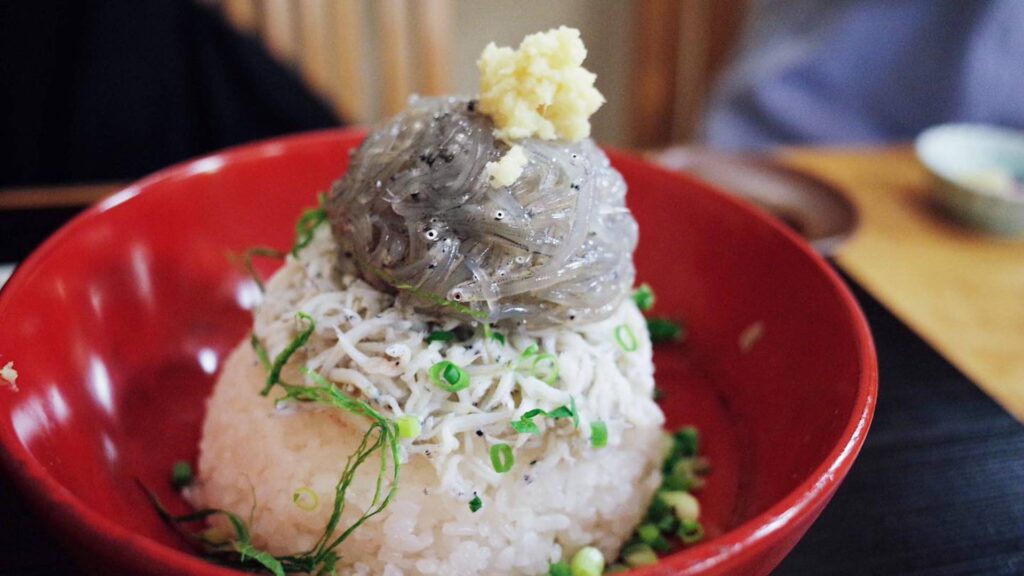
You can also take a stroll down Komachi Street, a popular shopping street near Kamakura Station filled with cute snack stalls, local souvenirs, and cafes.
In the afternoon, hop on the Enoden Line—a scenic little local train that winds along the coast—and head to Enoshima Island. This quirky island is connected to the mainland by a bridge and is packed with things to do. There are shrines to explore, caves to wander through (yes, actual sea caves), and panoramic viewpoints if you’re up for a bit of walking uphill.
You can also take it easy and just wander along the coast, grab some fresh seafood, or chill on the beach. If you’re into sunsets, this place is gold—on clear days, you can even spot Mount Fuji from the cliffs.
Both Kamakura and Enoshima are great for travellers who want culture without the crowds, history without the heavy museum vibes, and a taste of the seaside that’s super easy to get to. The area is best explored on foot, so wear comfy shoes, and expect to spend around ¥1,500–¥2,000 total on local entry fees and transport, not including food.
If you’re joining our day trip tour, we’ll help you map out the perfect route, time the tides if you want to explore the caves, and fit in the best viewpoints and foodie stops along the way. It’s one of the most relaxing yet content-packed day trips you can take from Tokyo.
Kawagoe

Kawagoe, nicknamed “Little Edo,” is the perfect day trip if you’re into old-school vibes, street food, and streets that look straight out of a samurai-era drama. It’s only about 30 minutes to an hour from Tokyo, depending on where you’re staying, and super easy to reach by train—just hop on the Tobu Tojo Line from Ikebukuro or take the JR line from Shinjuku.
The main draw here is Kurazukuri Street, a preserved district lined with traditional clay-walled warehouse buildings that look just like they did in the Edo period. It’s one of the rare places near Tokyo where you can really see that kind of historical townscape still intact. You’ll feel like you’ve stepped into a different time—without actually leaving modern convenience behind.
One of the coolest landmarks in town is the Toki no Kane, or “Time Bell Tower,” which has been chiming out the hours since the 1600s. There’s also Kashiya Yokocho, or “Candy Alley,” a narrow lane full of old-fashioned sweets shops and street food stalls. Keep an eye out for all things sweet potato—it’s Kawagoe’s specialty. You’ll find everything from purple sweet potato ice cream to sweet potato croquettes. Quirky, yes. Delicious? Also yes.

If you’re interested in culture and history, don’t miss Kawagoe Hikawa Shrine, known for its romantic charms and tunnel of wooden ema (prayer plaques). There’s also a charming old-style festival float museum and a few little temples dotted around if you feel like wandering off the main path.
Kawagoe is ideal for a relaxed, low-effort day out that still feels rich in atmosphere. It’s flat and walkable, packed with photo ops, and great for travellers who want to see a bit of traditional Japan without heading deep into the countryside.
If you join our day trip, we’ll guide you through the best streets, give you the backstory on the buildings and shrines, and help you snack like a local along the way.
Yokohama
![Where to go in spring in Japan Yokohama Park [Kanagawa Prefecture]](https://flipjapanguide.com/wp-content/uploads/2022/02/Where-to-go-in-spring-in-Japan-Yokohama-Park-Kanagawa-Prefecture-1024x576.jpg)
Yokohama is one of the easiest places to get to from Tokyo, and it’s got a totally different feel. Just 30 to 40 minutes by train, this port city blends modern attractions with cool history, open spaces, and some seriously good food. It’s a solid choice if you want something fun and varied without a long travel day.
A great place to start is Chinatown—the biggest in Japan and packed with character. The streets are lined with colourful gates, vibrant shops, and the smell of steamed buns in the air. You’ll find everything from crispy dumplings and juicy meat buns to Chinese herbal sweets and quirky souvenirs. It’s the kind of place where you can easily lose an hour or two just wandering and snacking.

From there, the Minato Mirai area is an easy walk and has a bunch of attractions to choose from. You can visit the playful and surprisingly interesting Cup Noodles Museum (you get to make your own custom cup), or take in the view from the top of Cosmo Clock 21, one of the biggest Ferris wheels in the world. If you’re more into relaxed vibes, head down to Yamashita Park for a stroll along the waterfront, or check out the Red Brick Warehouse, where you’ll usually find pop-up markets, seasonal events, and cute cafes.
Yokohama works for pretty much any kind of traveller. It’s open, walkable, and flexible—you can make it a food tour, a museum day, or just a chill outing by the water. Expect to spend around ¥2,000 to ¥3,000 on entry fees and snacks, depending on what you’re into.
If you book a day trip with us, we’ll help shape the day around what you want to do most, with enough time to explore the best parts at your own pace.
Sawara

If you’re after somewhere peaceful, photogenic, and a little off the usual tourist trail, Sawara is the spot. This charming little town in Chiba Prefecture is about 2 hours from Tokyo by train, and it’s a perfect choice for travellers who want to slow things down and soak in a more traditional, small-town atmosphere.
Sawara is often called a “mini Kyoto” by those in the know, thanks to its beautifully preserved Edo-period streets and old merchant houses. The heart of the town is the Onogawa River, which winds through the historic district and is crossed by several cute wooden bridges.
You can hop on a small boat and cruise gently down the canal while a local guide tells stories from the town’s trading days. It’s not super touristy, so you get that authentic, quiet vibe without the crowds.
One of the main highlights is the Ino Tadataka Museum, dedicated to the man who made the first official map of Japan. It’s set in his former home, which is a nice peek into old-school architecture and lifestyle.
You’ll also find sake breweries, little cafes in wooden townhouses, and small shrines tucked into alleyways. The town is compact and easy to walk around, so you can just wander without needing a fixed plan.
On our day trip, we’ll show you the best little corners, help you time the boat rides just right, and guide you through a side of Japan most tourists miss.
Mount Takao
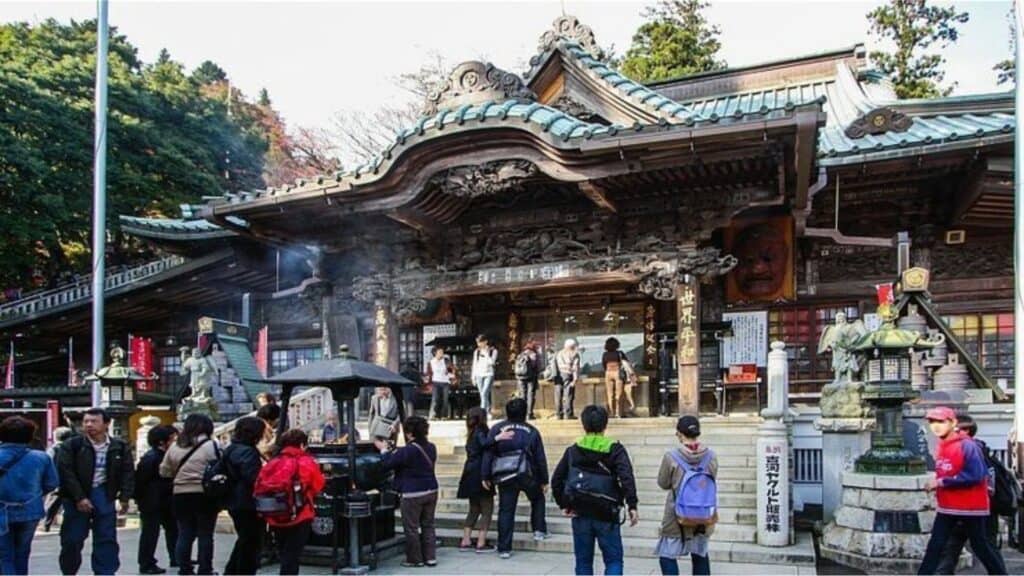
If you’re looking for an easy nature escape that doesn’t require leaving Tokyo completely behind, Mount Takao is a favourite among locals for good reason. Just under an hour from Shinjuku Station, it’s one of the closest mountain getaways from central Tokyo—and super easy to reach on the Keio Line. You don’t need to be a hiking pro to enjoy it either; it’s accessible, scenic, and really flexible depending on how active you want to get.
There are several different hiking trails, and depending on which one you take, you’ll come across things like Yakuo-in Temple, forest paths, and the occasional snack stand. At the summit, you’ll be treated to wide views over Tokyo and, if the weather’s clear, you might even spot Mount Fuji in the distance.
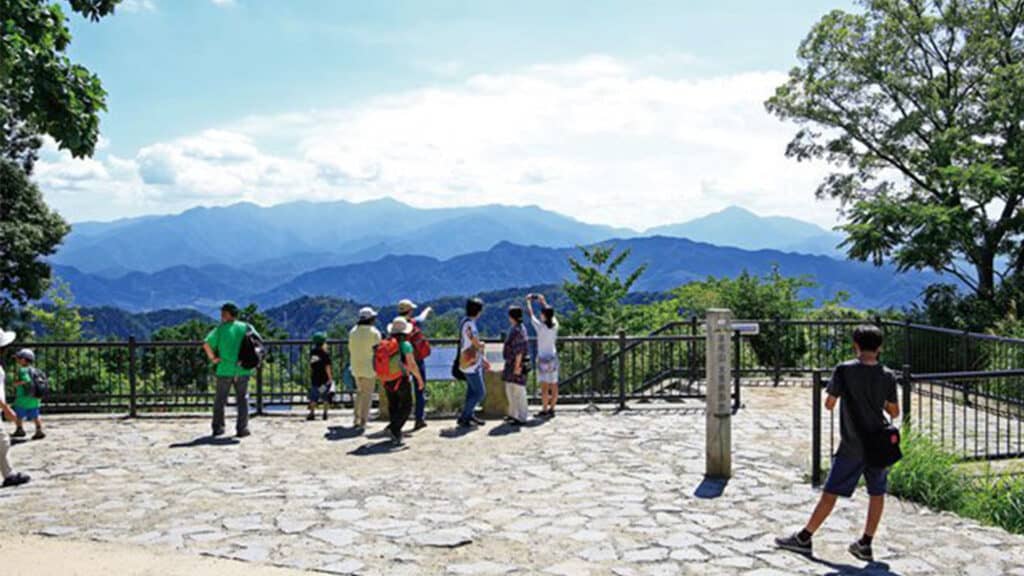
There’s also a small monkey park and wild plant garden, a few observation decks, and plenty of spots to grab a bite or sit and take it all in. In warmer months, there’s even a seasonal beer garden near the top that’s popular with locals. For a fun little bonus, the cable car itself is one of the steepest in Japan—worth a ride if you’re not in the mood for uphill hiking.
The round trip from Tokyo is affordable, with train fare and extras like the lift or cable car costing around ¥1,000–¥1,500 total. If you’re booking a day trip with us, we’ll help you figure out the best route, time things to avoid the peak crowds, and make sure your Takao day out fits the kind of nature experience you’re looking for.
If you’ve got time, you can also check out the Takao 599 Museum at the base, which has cool exhibits on local wildlife and forest life, or grab a bite at one of the nearby soba shops—Takao is known for it.
Okutama
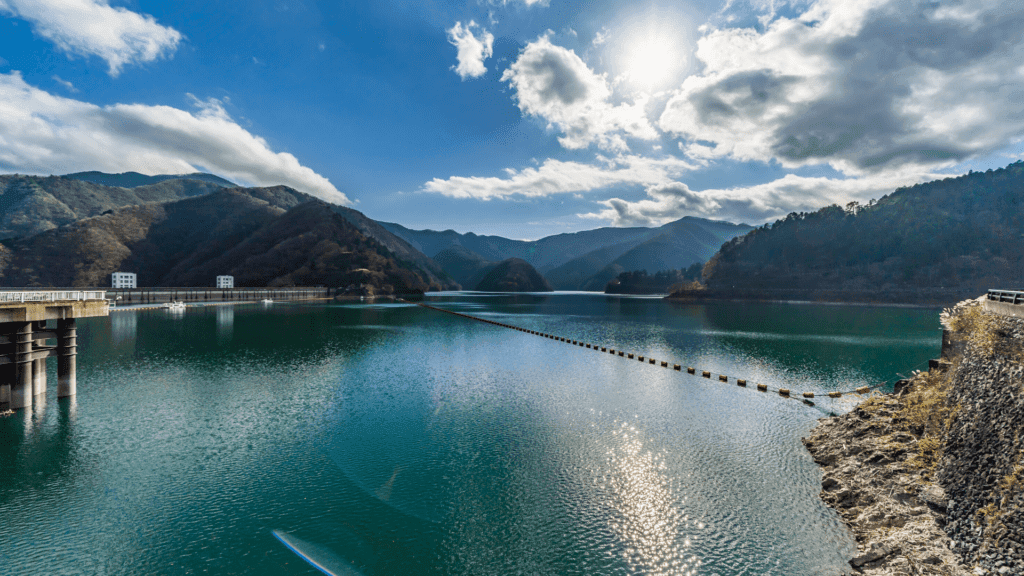
If your idea of a perfect day trip involves fewer crowds and more nature, Okutama is your kind of place. Tucked into the far western edge of Tokyo Prefecture, it’s about 2 to 2.5 hours from central Tokyo by train, and it feels like stepping into a completely different world—one filled with mountains, rivers, forests, and that quiet you didn’t know you were missing.
This is where Tokyo locals go when they want a proper nature fix. You’ve got scenic hiking routes, crystal-clear rivers, and mountain views everywhere you look. One of the most popular sights is Lake Okutama, surrounded by lush green hills and perfect for a peaceful walk or picnic.
For something a bit more active, there’s the Nippara Limestone Cave, one of the largest in the region, with cool rock formations, lantern-lit paths, and an otherworldly atmosphere.
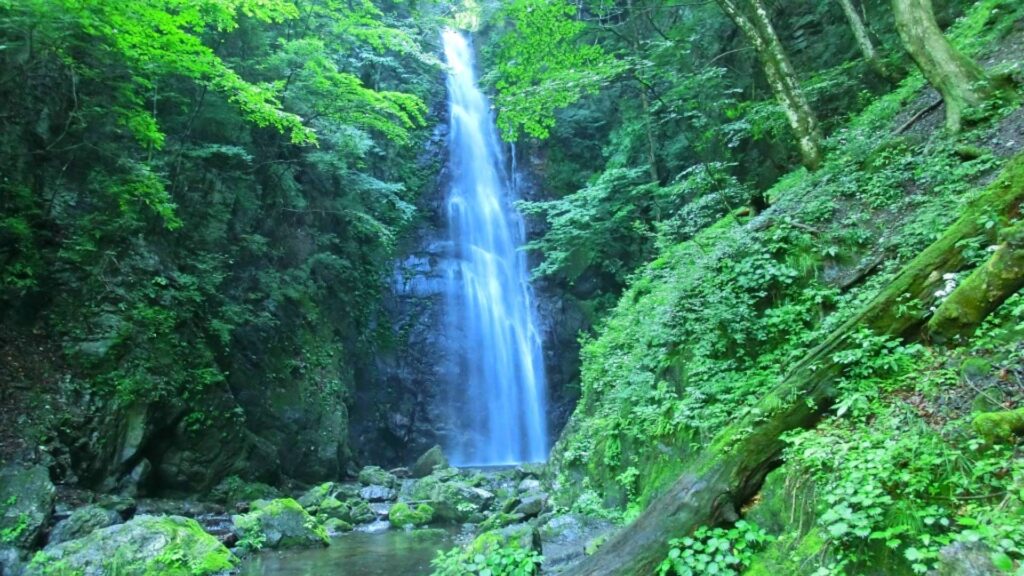
If you’re into hiking, there are routes that range from relaxed to rugged, including access points to Mount Mitake and Mount Kumotori—Tokyo’s tallest peak. Even just walking around the town centre is lovely, with traditional inns, tiny shrines, and bridges over turquoise rivers. You can also try activities like fishing or river rafting in warmer months, or simply dip your feet in the cool water and relax.
Okutama is a great fit for travellers who want to escape the city and immerse themselves in nature without needing to commit to an overnight trip, but it’s best to leave early in the day. If you’re booking a tour with us, we’ll help plan a route that fits your pace—whether you’re up for a proper mountain trek or just want to explore the quieter side of Tokyo with a bit more breathing room.
Chichibu

Chichibu is one of those places that feels a bit under the radar, but totally delivers. It’s tucked into the hills of Saitama, about 1.5 to 2.5 hours from Tokyo depending on your route. The easiest way to get there is on the Seibu Line from Ikebukuro, and if you want a smoother ride, the Red Arrow limited express is definitely worth it.
Once you arrive, the whole area has this peaceful, local energy that’s super refreshing after Tokyo. Right in the centre of town, you’ll find Chichibu Shrine—a beautiful spot with colourful carvings and a calm vibe that makes it nice for a quiet wander. If you’re visiting in spring, Hitsujiyama Park is a highlight. It’s famous for its fields of bright pink moss flowers, and the views of the mountains in the background are amazing.
It’s also a great place to eat—think big portions, bold flavours, and cosy local shops. Try waraji katsudon (huge pork cutlet on rice), hand-cut soba noodles, or anything with miso. You won’t leave hungry. Budget around ¥2,000–¥3,000 for the trip, depending on your train and how much you snack.
Chichibu also knows how to throw a proper festival. The Chichibu Night Festival in December is one of the best around, with massive floats, lanterns, fireworks, and a great atmosphere. Even if you’re not around during festival season, you can still check out the Matsuri Kaikan museum to see the floats up close and learn more about the town’s traditions.
If you join our day trip, we’ll help you pick the best spots based on the season and your pace, so you can really enjoy what makes Chichibu such a great place to explore.
Omiya

If you’re in the mood for something calm, cultural, and close to Tokyo, Omiya is a solid choice. It’s only about 30 to 40 minutes from central Tokyo by train, which makes it perfect if you want a slower-paced day without a long journey. It’s not flashy or touristy—but that’s exactly the appeal.
One of the coolest and most unique things about Omiya is its Bonsai Village. Yep, a whole neighbourhood dedicated to bonsai culture. You’ll find several bonsai nurseries you can walk into, chat with the growers, and just admire these tiny, centuries-old trees that are basically living art.
The Omiya Bonsai Art Museum is also worth a visit—it’s beginner-friendly, beautifully designed, and gives you a look into the history and philosophy behind bonsai without getting too heavy. Entry’s just ¥310, and it’s super peaceful inside.
Omiya also has a few quiet temples and shrines you can wander through, plus small cafes and traditional shops tucked into side streets. It’s a nice area to just stroll, relax, and take your time. If you’re into Japanese gardens, there’s Hikawa Shrine and its surrounding park, which offers a lovely little escape with lots of greenery and space to breathe.
If you’re joining us for this day trip, we’ll help you explore the bonsai spots, find the coziest corners of the neighbourhood, and enjoy the calm side of Japan that most visitors totally miss.
Ready to Day Trip Like a Pro?
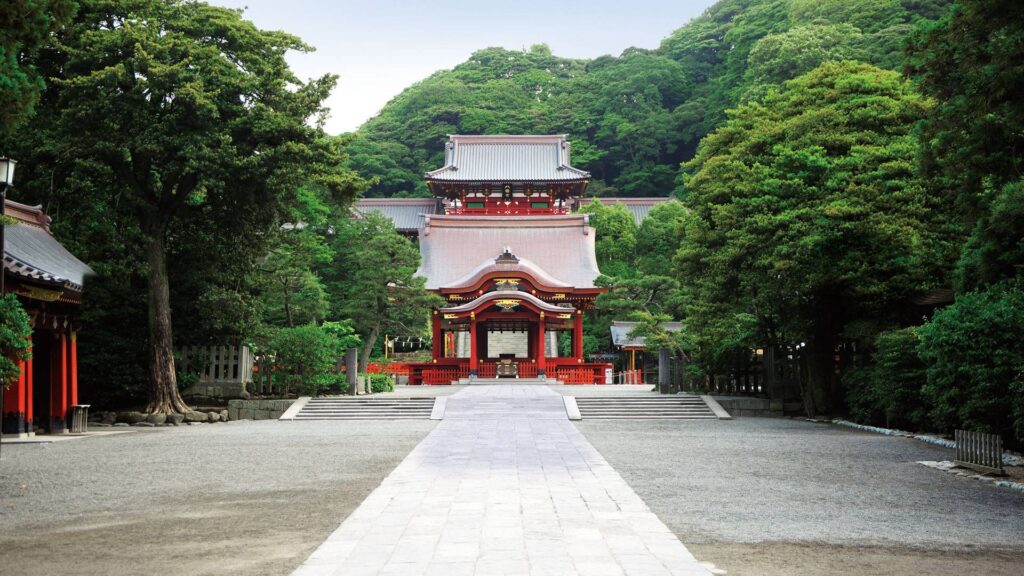
Looking to explore beyond Tokyo without the hassle of planning? We’ve got you. At Flip Japan Guide, we offer fully customisable private day trips from Tokyo, designed around your interests, pace, and travel style.
The day trips listed above are just a few ideas to get inspired – the destination is completely up to you. Your guide will help plan the perfect route, suggest the best spots, and match the vibe of your day, whether you’re in the mood for peaceful walks, great eats, or a bit of both.
The tour lasts around eight hours, and we recommend starting in the morning to make the most of it. Transport isn’t included, but don’t worry – we’ll help you map out the smoothest and most scenic journey.
Ready to make your Tokyo trip even more unforgettable? Book a customised Tokyo day trip with Flip.

